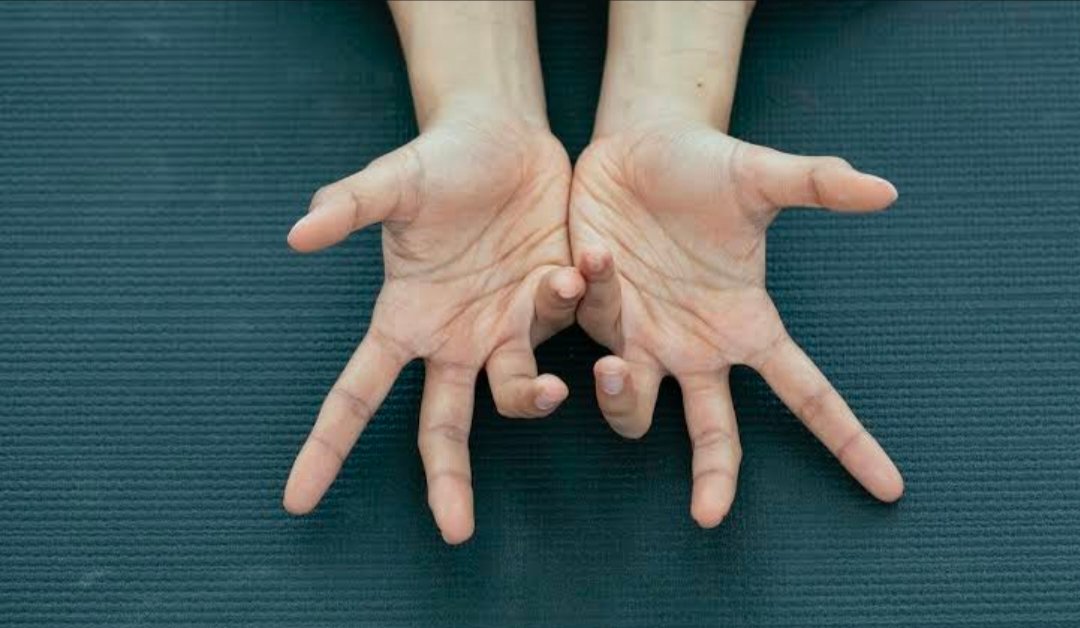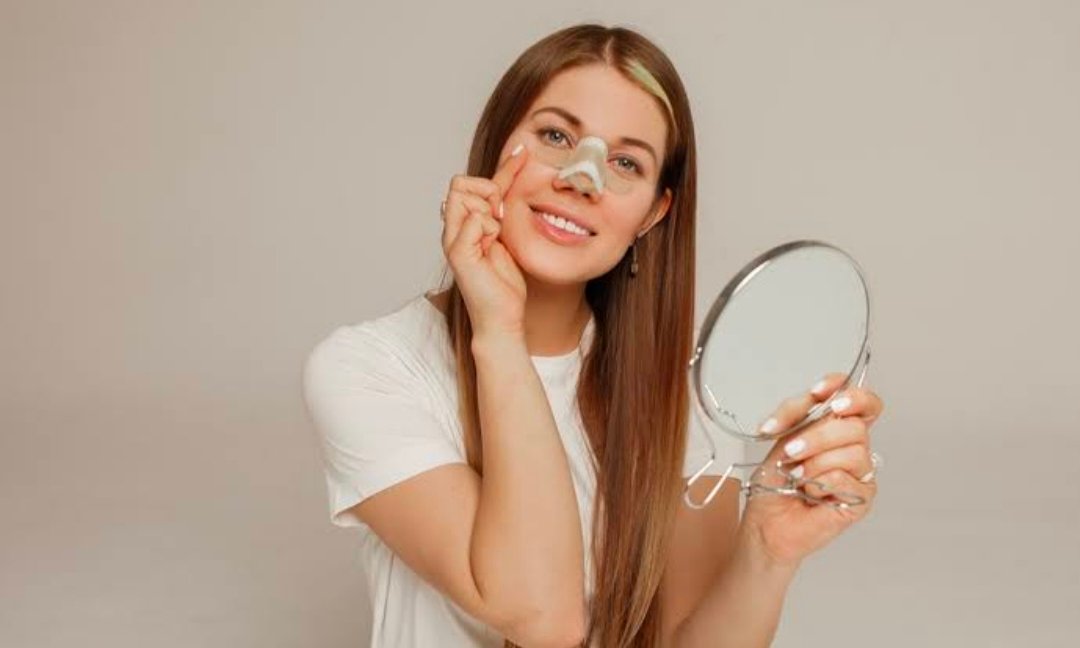Health
What are the Permanent Solutions for Plantar Fasciitis?

The most frequent issue we visit patients with is plantar fasciitis-related heel discomfort. Though the pain is usually not in the bone, this condition is sometimes referred to as heel spurs. A strong band of tissue that connects bones called the fascia of the plantar region runs beneath your foot and joins your toes to the bone that supports your heel. Although everyone has them, those in their middle age, runners, overweight individuals, and those wearing poorly supported shoes are more likely than others to experience issues associated with their plantar fascia.
As we become older, we often do not stretch our plantar fascia and hamstrings enough. They become irritable and inflamed, and we acquire little small tears in them. We continue pushing despite failing to pause, rest, and pay attention to our bodies. If you are looking for someone to treat your Plantar fasciitis then search for Plantar fasciitis treatment UK
Plantar Fasciitis: What is it?
One of the most prevalent conditions that cause heel discomfort is plantar fasciitis. The plantar fascia, a strong, fibrous ribbon of tissue that extends across the sole of a person’s foot, is inflamed. The base of the toes and the heel bone (calcaneus) are where the plantar fascia, or heel ligament, is attached. It plays a crucial part in maintaining proper foot mechanics when walking and aids in supporting the posterior part of the foot.
Placing weight on the sole, such as while standing, causes the plantar fascia to become more tense or stressed. As you push off using your toes and the ball of the foot, your tension also rises. These two motions happen when you walk or run normally.
Plantar Fasciitis Treatment Alternatives
Plantar fasciitis is not a chronic or permanent ailment, and it usually gets better with treatment. After receiving conservative care for several months, the majority of patients fully recover. You also have a wide range of choices at your disposal.
Treatment for plantar fasciitis is conservative and works well in many cases. Once experts diagnose your plantar fasciitis, they usually suggest conservative measures initially. The following therapies and treatments may be beneficial to you:
- Take it easy to enable your plantar fascia to heal from the strain, even if you have to splint at night.
- Ice packs, medication for inflammation, or injections of certain steroids
- Certain stretches and workouts assist the muscles and tissues
- Personalized arch stabilizers or orthotics, or just a simple switch of shoes
Surgery could be necessary for serious manifestations of plantar fasciitis. With more than 40 years of experience, experts specialize in reconstructing the feet and ankles. Thus, you’re in competent, capable hands with him if you require surgery to fix injured plantar fascia. Your recovery period is shortened by the use of the least invasive treatment methods by experts.
Treatments
Using specialized equipment or physical treatment could help with symptoms. Possible course of treatment:
- Physiotherapy. You can strengthen the muscles in your lower legs and stretch the connective tissue between your plantar fascia and Achilles tendon with the help of a physical therapist. You may also learn how to strengthen the bottom of your foot with athletic taping from a therapist.
- Splints at night. To encourage stretching during your sleep, your care team may advise you to wear a compression device that positions the tendon between your Achilles heel and the planter fascia in an extended posture during the night.
- Orthopedics. To better equally distribute the strain on your feet, your healthcare provider may recommend orthotics, which are custom-fitted or already established arch supports.
- Crutches for assistance canes that are walking boots. To prevent you from shifting your foot or accidentally putting all of your body weight on it, your healthcare provider may advise you to use one of these for a short while.
Upon examination, the anteromedial portion of the calcaneus is typically the site of highest pain for the patient. In addition, the proximal ligaments in the plantar fascia may be painful for the patient. Standing on the pointed ends of a person’s toes or passively flexion of the foot of that toe might make the patient’s pain worse.
When diagnosing and treating plantar fasciitis, examination for diagnosis is rarely necessary. The term “heel spurs” is frequently used to describe plantar fasciitis, however, this is a bit misleading because many people with symptoms are not suffering from heel spurs, and between fifteen and twenty-five per cent of the population in general does not exhibit signs or symptoms. Heel spurs, or bone osteophytes, are visible on the radiography of the front calcaneus. However, people who experience heel pain that doesn’t seem to be related to anything else, those suffering from an unusual case of fasciitis of the plantar fascia, or individuals who are not getting better after the suggested course of therapy have to think about getting tested for the condition.
Final Words
Although the condition known as plantar fasciitis can greatly impair everyday activities and the standard of life, long-term relief is achievable with the appropriate treatment. People can successfully manage plantar fasciitis effectively and lead active lives without foot discomfort by putting into practice a thorough treatment strategy that targets the root of the problem, encourages tissue healing, as well as minimizes recurrence. Also read: The Role of Good Posture in Preventing Back Pain?
Health
Hamerduim: What It Is, Causes, and How to Treat It


A Hamerduim, also called a claw thumb, is a condition in which the thumb remains in a bent position. This condition can lead to pain, stiffness and limitations in the movement of the thumb. In this article we will discuss what exactly a Hamerduim is, what causes it and how it can be treated.
What is a Hamerduim?
A Hamerduim is a condition of the thumb in which the first phalanx (metacarpal phalanx) is bent and the second phalanx (proximal phalanx) is straight. This causes the thumb to appear bent, as if it were a hammer. This condition can lead to pain and stiffness in the thumb, as well as limitations in the movement of the thumb.
Hamerduim cause
There are several causes of Hamerduim, including:
- Arthritis: Arthritis, especially osteoarthritis, can lead to hardening and calcification of the ligaments and joints in the hand, causing the thumb to remain in a bent position.
- Injury: Injury to the hand or thumb can lead to damage to the ligaments and joints, causing the thumb to remain in a bent position.
- Heredity: Some people have a hereditary predisposition to Hamerduim.
- Overuse: Overuse of the thumb, such as pinching and grasping, can lead to Hamerduim.
Treatment of a Hamerduim
There are several treatment options for Hamerduim, depending on the severity and cause of the condition.
- Physical Therapy: Physical therapy can help strengthen and stretch the muscles and ligaments in the hand, allowing the thumb to return to a normal position.
- Splinting: Wearing a splint can help support and straighten the thumb, reducing pain and stiffness.
- Injections: In some cases, corticosteroid injections may be used to reduce inflammation and pain.
- Surgery: In severe cases, surgery may be necessary to repair or replace the ligaments and joints in the hand. Surgical options can range from replacing the joints to applying splints or implantable devices to keep the thumb in a straight position.
- Medication: Pain relievers such as acetaminophen or ibuprofen can help reduce the pain and inflammation of mallet thumb.
It is important to remember that treatment for Hamerduim depends on the cause and severity. A doctor or physical therapist can develop a treatment plan that is tailored to the patient’s specific situation.
Prevention of Hamerduim
There are a number of things you can do to reduce your risk of developing Hammer Thumb, such as:
- Avoid excessive use of hands and fingers
- Stretch and strengthen the muscles and ligaments in the hands regularly
- Prevent injuries to the hands
- Use correct techniques when pinching and grabbing
- wear proper protection when performing activities that may put you at risk for Hammer Thumb.
Hamerduim surgery
A Hamerduim operation is a surgical procedure performed to fix the base of the thumb in cases of Hamerduim. A Hamerduim is a condition in which the tendon of the adductor pollicis muscle, which is responsible for deflecting the thumb, separates from the base of the thumb and becomes stuck in the opposition of the thumb, making it impossible to keep the thumb straight.
During Hamerduim surgery, this tendon is replaced and attached to the base of the thumb, allowing the thumb to regain its normal function. The surgery can be performed using open or laparoscopic surgery. Recovery time after surgery varies from person to person, but often a period of immobilization and physical therapy is required to allow the thumb to fully heal.
Hamerduim Fake Nails
A Hamerduim can make it difficult to wear nail polish or care for nails because the thumb cannot be held in a normal position. However, there are special “Hamerduim nail plates” available that can be used to support the thumb while caring for the nails.
These ‘ false nails ‘ plates are often made of soft material, such as foam, and are designed to hold the thumb in the correct position while the nail is being cared for. They are often easily adjustable to the size of the thumb and can be easily attached with a hook and loop system or a velcro strip.
There are also alternatives that use devices such as pins, rings or a splint to hold the thumb in the correct position. It is always advisable to consult a doctor or physical therapist before using such products to ensure they are safe to use and suitable for your particular condition. Enjoy Hint Today.
Health
The Comprehensive Guide to Rhinoplasty: What You Need to Know


What Is Rhinoplasty?
Rhinoplasty, often called a nose job, is a highly specialized surgical procedure designed to reshape the nose. The primary motivations for undergoing this surgery fall into medical and cosmetic categories. Medically, rhinoplasty can correct breathing issues or repair deformities caused by injury or congenital conditions. Cosmetically, the surgery aims to enhance the aesthetic appearance of the nose, making it more harmonious with other facial features.
Who Is a Candidate for Rhinoplasty?
Rhinoplasty is not limited to individuals concerned with aesthetics; it is also valuable for those with functional nasal issues. Good candidates for rhinoplasty typically have a fully developed nose, are in good overall health, and have clear, realistic expectations about the results. Prospective patients should discuss their motivations and desired outcomes with a qualified surgeon to determine if they are suitable candidates. Medical evaluations and assessments ensure the patient is physically and mentally prepared for the surgery. If you are considering rhinoplasty Naperville or another location, it’s essential to know the ins and outs of the procedure.
Types of Rhinoplasty
Rhinoplasty is not a one-size-fits-all procedure; there are several types designed to address different needs:
- Open Rhinoplasty involves an incision along the columella, the tissue separating the nostrils. This approach gives the surgeon better visibility and access to the nasal structure, allowing for more extensive reshaping.
- Closed Rhinoplasty: In this method, all incisions are made inside the nostrils, leaving no visible scars. This approach is often employed for less extensive reshaping and offers a quicker recovery time.
- Revision Rhinoplasty: Sometimes, a secondary surgery is necessary to correct or refine the results of a previous rhinoplasty. This type is more complex and requires a highly skilled surgeon to succeed.
Reading about correcting nasal deformities might provide additional insights for those keen on understanding the different techniques used in nasal surgery.
Preparation and Recovery
Preparation for rhinoplasty involves multiple steps designed to optimize the surgical outcome. Prospective patients should thoroughly consult their surgeon to discuss options and set realistic goals. Medical evaluations may include blood tests and other assessments to ensure the patient’s fitness for surgery. Pre-operative photographs are often taken to aid in surgical planning.
Recovery is a critical part of the rhinoplast journey. Initially, patients can expect swelling and bruising, which usually subside within a few weeks. Most individuals resume normal activities within 2-4 weeks, but full recovery can take up to a year. Following the surgeon’s post-operative care instructions and attending follow-up appointments are essential for achieving the best possible results during this period.
Risks and Benefits
As with any surgery, rhinoplasty has risks alongside benefits. The most commonly reported complications include infection, anesthesia reactions, and nasal obstruction. However, these risks are significantly minimized when a skilled, board-certified surgeon performs the procedure.
The benefits of rhinoplasty often extend beyond physical appearance. Many patients experience increased self-confidence and improved nasal function. For those suffering from breathing issues, the surgery can be life-changing. Knowing the potential risks and benefits helps patients make informed decisions and set realistic expectations for the outcome.
Cost and Financing Options
The cost of rhinoplasty varies widely, influenced by factors such as the surgeon’s expertise, the complexity of the procedure, and the clinic’s location. On average, rhinoplasty can range from $5,000 to $10,000. This cost typically includes the surgeon’s fee, anesthesia, and facility charges.
Given the significant investment, many clinics offer financing options to make the procedure more accessible. Understanding average cosmetic surgery costs and exploring different financing plans can help prospective patients manage their budgets effectively.
Common Myths About Rhinoplasty
Many myths surround nose reshaping surgery, which often skews public perception. One common myth is that rhinoplasty is only for cosmetic purposes. However, many procedures are performed to correct functional issues like deviated septums or other breathing problems.
Another misconception is that rhinoplasty is an option only for the wealthy. On the contrary, many financing options and payment plans make the surgery accessible to a broader range of people. Dispelling these myths through thorough research and consultations can help make a more informed decision.
Choosing a Surgeon
The success of any rhinoplasty procedure largely hinges on the surgeon’s expertise and experience. When selecting a surgeon, patients should look for board certification and experience in performing rhinoplast. Recommendations from friends or online reviews can also provide valuable insights.
Consulting with multiple surgeons before making a final choice can be beneficial. During these consultations, asking about the surgeon’s experience and techniques and reviewing before-and-after photos can help make an informed decision. Don’t hesitate to ask questions and express concerns; a good surgeon will always be willing to provide detailed answers and explain the process thoroughly. Enjoy Hint Today.
Health
The Ultimate Guide To Achieving Glowing Skin: Skincare Tips and Tricks


Glowing skin has become the hallmark of health and beauty, coveted by many and achieved through conscientious skincare practices. Achieving that elusive radiance involves a combination of hydration, nutritious diet, tailored skincare routines, sun protection, and professional treatments. Understanding your skin’s needs and providing it with the essential care can significantly enhance its natural glow and vitality. Below, explore the quintessential steps to unlock the secret to a healthier, more radiant complexion that is sure to turn heads.
The Essential Role of Hydration for Radiant Skin
Hydration is key to healthy, glowing skin. Drinking plenty of water daily helps plump up skin cells for a youthful appearance and flushes out toxins that dull the complexion. Pair internal hydration with topical moisturizers containing hyaluronic acid or glycerin to lock in moisture and strengthen the skin barrier. Rich creams are best for dry skin, while lighter lotions or gels suit oily skin.
Environmental factors like heating and air conditioning can deplete skin moisture. Using a humidifier helps maintain hydration, creating a balanced environment for your skin. Minimize alcohol and caffeine, which dehydrate the skin, and opt for herbal teas and infused water instead. For more skincare tips, visit https://rossiderm.com/.
Balancing Your Diet for Optimal Skin Health
The saying “you are what you eat” is particularly relevant for skin health. A balanced diet rich in fruits, vegetables, lean proteins, and antioxidants can protect the skin from cellular damage. Consuming foods like berries, leafy greens, and nuts can significantly enhance skin’s glow. Omega-3 fatty acids found in fish like salmon and walnuts are essential for maintaining skin health, providing lipids and reducing dryness. Avocados are rich in healthy fats and vitamins E and C.
High sugar intake can lead to inflammation and collagen damage, accelerating the aging process. Moderation is key to prevent skin conditions like acne. Hydration is crucial for nutrient absorption and circulation, and drinking water is essential for maintaining optimal skin health.
Crafting a Skincare Routine for Your Skin Type
Skincare for different skin types requires a tailored approach. Oily skin may benefit from gel-based cleansers, while dry skin might need cream-based ones. Exfoliation is crucial for cell turnover and revealing fresh skin, but frequency and method should be customized to avoid irritation.
Targeted treatments like serums address specific skin concerns like hyperpigmentation, fine lines, or acne. Select treatments that align with your goals and integrate them into your routine. Applying skin care products in the correct sequence ensures proper absorption and effectiveness, starting with lighter formulas and ending with heavier creams. Consistency in your skincare routine is key to improving skin health and radiance.
Importance of Sun Protection in Preventing Skin Damage


Sun damage is a significant threat to skin health, causing premature aging, hyperpigmentation, and increased skin cancer risk. To protect against this, daily application of sunscreen with an SPF of at least 30 is essential, regardless of the season or outdoor activities. Physical sunscreens with zinc oxide or titanium dioxide offer broad-spectrum protection, while chemical sunscreens are lightweight and clear.
Protective measures like wearing wide-brimmed hats, UV-blocking sunglasses, and protective clothing can also reduce UV exposure. Seeking shade during peak sun hours can also minimize UV ray impact. Reapplying sunscreen every two hours, especially after swimming or sweating, is crucial for maintaining effective sun protection throughout the day.
Exploring Professional Skin Treatments and Their Benefits
At-home skincare routines are essential, but certain skin issues may benefit from professional treatments like chemical peels, laser therapy, and microdermabrasion. For aging, Botox or dermal fillers can offer instant results, but require an experienced practitioner for safety and effectiveness. Research and find a reputable professional to guide you through the best options. Frequent visits to a skincare professional can monitor skin health and provide valuable insights.
They can adjust your skincare regimen as your skin changes due to factors like age, hormonal shifts, or lifestyle changes. An initial consultation with a dermatologist is a wise investment to gain a deeper understanding of your skin type and conditions, allowing you to make preventive decisions and avoid misguided treatments.
Overall, the journey to achieving glowing skin is an intricate balance of lifestyle choices, consistent skincare practices, and occasional professional intervention. By adhering to these foundational steps, anyone can enhance their skin’s health and radiance, revealing their best complexion. Remember, the secret to beautiful skin lies in the daily dedication to nurturing and protecting it. Enjoy Hint Today.
-



 Entertainment3 months ago
Entertainment3 months agoMoviesJoy Plus: A Comprehensive Guide to Streaming
-



 Game3 months ago
Game3 months agoWordle Hint Today Newsweek and Clues to Win the Puzzles
-



 Game3 months ago
Game3 months agoToday’s NYT ‘Connections’ Hints And Answers For Thursday, June 27
-



 Game3 months ago
Game3 months agoToday’s ‘Connections’ Hints And Answers For Sunday, June 23
















